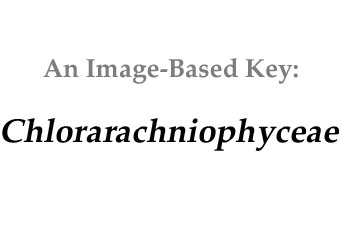




The Chlorarachniophyceae are a recently described class of amoeboid unicells with cytoplasmic extensions (filose pseudopods) that hold them together in a loose colony and also capture bacteria Hibberd and Norris 1984). They are mixotrophic, both photosynthetic and heterotrophic (ingesting bacteria).
Chloroplasts are surrounded
by four membranes indicating a primary and secondary endobiosis.
A nucleomorph - remains of the nucleus of an
endobiont - is located between the two pairs of membranes.
Motile cells occur with a
single emergent flagellum and a second basal body indicating a biflagellate
ancestry. Cysts may be formed from the motile cells (Moestrup and Sengco 2001).
References:
Hibberd, D.J. and R.E. Norris 1984. Cytology and ultrastructure of Chlorarachnion reptans (Chlorarchniophyta Divisio nova, Chlorachniophyceae Classis nova). Journal of Phycology 20(2): 310-330.
Moestrup, Ø. and M. Sengco 2001. Ultrastructural studies on Bigelowiella natans, gen. et sp. nov., a Chlorarachniophyte flagellate. Journal of Phycology 37(4):624-646,


